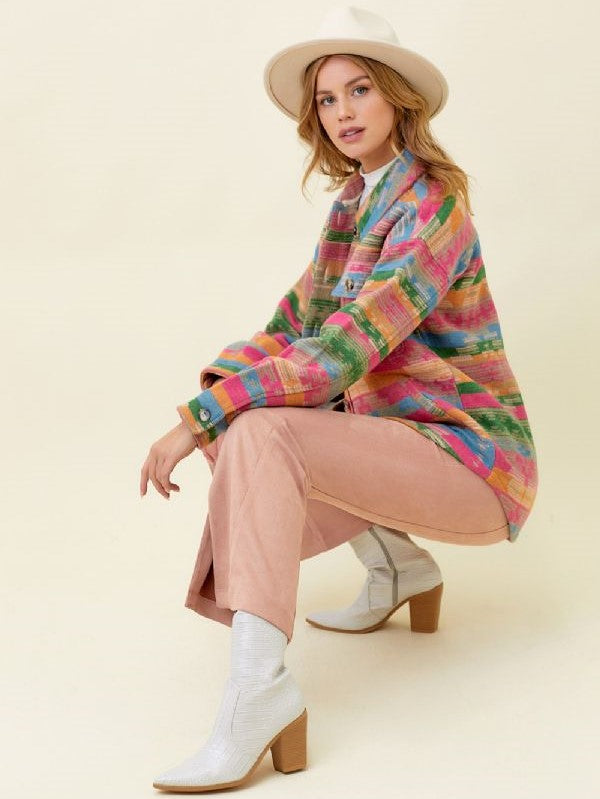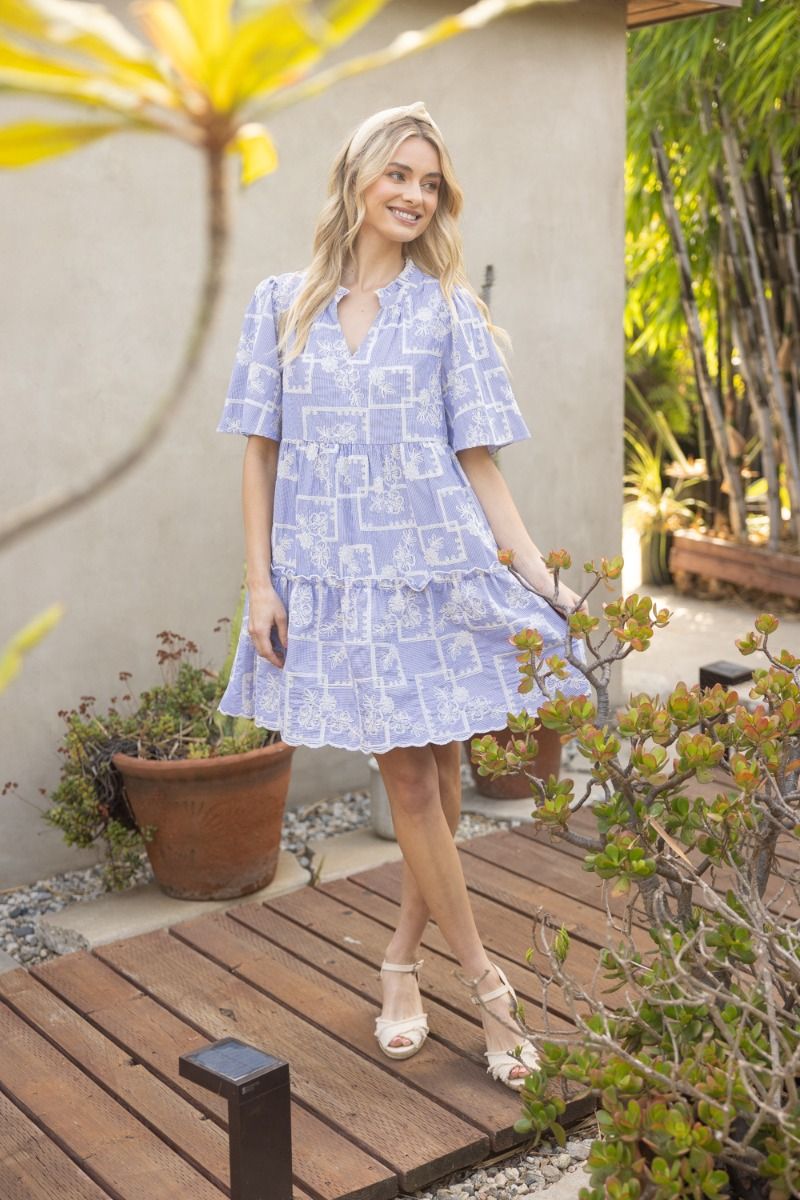Layering is fashion's most practical skill that doubles as creative expression. Far from simply throwing on multiple pieces, strategic layering creates visual depth, extends your wardrobe's versatility, and allows you to adapt to changing temperatures throughout the day. The key lies in understanding how different textures, lengths, and proportions work together to create cohesive, interesting looks.
Foundation Principles of Successful Layering
Start with Fit: Every successful layered look begins with properly fitting base pieces. Your foundation layer should sit close to your body without being restrictive. The Contrast Zip Knit Top W/Side Slits works beautifully as a base layer because its fitted silhouette provides a smooth foundation for additional pieces.
Consider Proportions: Layering changes your silhouette, so understanding proportion is crucial. Each layer should serve a purpose – whether adding warmth, creating visual interest, or balancing your overall shape. Avoid adding bulk where you don't need it, and use layers strategically to create the proportions you love.
Mind Your Lengths: Successful layering plays with varying lengths to create visual movement and interest. The Striped Embroidered Tiered Dress W/Ruffle Detail could work beautifully under a cropped cardigan or blazer, allowing both the dress details and the layer to be visible and appreciated.
Texture Mixing for Visual Interest
Smooth and Textured Combinations: Pairing smooth fabrics with textured ones creates compelling contrast. A sleek Satin Tiered Maxi Dress could be layered with a chunky knit cardigan for an interesting interplay between refined and cozy textures.
Structured and Flowing Elements: Balance structured pieces with flowing ones. The Deuce Dolman Waffle Knit Top offers an interesting relaxed texture that could be layered under a structured blazer or over a fitted camisole for different effects.
Natural and Synthetic Blends: Don't be afraid to mix natural fibers with synthetic ones. Cotton, wool, and silk each bring different qualities to layered looks, and understanding their properties helps you create both comfortable and visually appealing combinations.
Seasonal Layering Strategies
Spring Transitions: Spring layering focuses on adaptability as temperatures fluctuate throughout the day. Start with lightweight base pieces like the Tucked Lace Insert Blouse and add a light cardigan or blazer that can easily be removed as the day warms up.
Summer Layering: Even summer benefits from strategic layering. Focus on lightweight, breathable fabrics and use layering for sun protection or air-conditioned environments. A Floral Embroidered Lace Top W/Fringe Detail could layer beautifully over a simple camisole for added coverage and visual interest.
Fall Foundations: Fall layering becomes more substantial as you prepare for cooler weather. The Heart Knit Puff Sleeve Top W/Stripe Trim offers warmth while maintaining style, and its interesting details make it worthy of being a visible layer rather than hidden underneath.
Winter Sophistication: Winter layering requires the most strategy, balancing warmth with style. Focus on quality base layers and invest in pieces that look intentional rather than purely functional.
Creating Visual Hierarchy
Focal Point Management: In any layered look, one element should dominate while others support. If you're wearing a detailed piece like the Embroidered Ruffle Sleeve Ribbon Dress, keep additional layers simple to avoid competing for attention.
Color Coordination: Successful layering often relies on a cohesive color story. This doesn't mean everything must match perfectly, but colors should relate to each other harmoniously. Neutral base layers provide flexibility for adding colorful outer pieces.
Pattern Play: Layering offers opportunities for sophisticated pattern mixing. Start conservatively by layering solid pieces over patterned ones, then gradually experiment with combining different patterns as your confidence grows.
Practical Layering for College Life
Classroom Comfort: Campus buildings often vary dramatically in temperature. The Balloon Half Sleeve Poplin Midi Dress W/Pockets provides a perfect base for layering – add a cardigan for chilly lecture halls and remove it for warmer outdoor activities.
Day to Night Transitions: Layering allows you to transition seamlessly from day classes to evening activities. A Flutter Sleeve Pintuck Dress W/Elastic Waist could work for daytime with a denim jacket, then transition to evening wear with a sleek blazer and statement jewelry.
Weather Adaptability: College life often involves unexpected weather changes. Building layering skills means you're always prepared, whether it's a sudden rainstorm or an unexpectedly cold classroom.
Advanced Layering Techniques
The Third Piece Rule: Often, what separates good outfits from great ones is that crucial third piece. This could be a blazer over a dress, a cardigan over a tank and skirt combination, or even an interesting belt that ties layered pieces together.
Unexpected Combinations: Once you master basic layering, experiment with unexpected combinations. Try layering the Geometric Ribbed Short Sleeve Knit Top over a long-sleeved shirt for an interesting play on proportions and textures.
Accessory Layering: Don't forget that accessories count as layers too. Scarves, belts, and jewelry all contribute to your overall layered look and can tie disparate pieces together into a cohesive outfit.
Layering Different Garment Types
Dress Layering: Dresses offer excellent layering foundations. The Eyelet Button Down Dress W/Front Pockets could be layered with a fitted turtleneck underneath for cooler weather, or with a cardigan over for a preppy, polished look.
Top Combinations: Layering tops requires attention to necklines and sleeve lengths. The Leopard Rib Trim Split Neck Top offers an interesting neckline that could peek out beautifully from under blazers or cardigans.
Set Coordination: Coordinated sets like the Santorini Dreams Cami & Shorts Set can be layered creatively – wear the pieces together or separately with other items to multiply your outfit options.
Investment Layering Pieces
Quality Cardigans: A well-made cardigan in a neutral color provides endless layering opportunities. Look for pieces with interesting details that make them worthy of being the visible outer layer.
Classic Blazers: A structured blazer instantly elevates any layered look and works across seasons with different base pieces.
Versatile Jackets: Denim jackets, utility jackets, and other casual outer layers provide texture contrast and work with both casual and dressed-up base layers.
Avoiding Common Layering Mistakes
Bulk Management: Adding layers shouldn't mean adding unnecessary bulk. Choose pieces that layer smoothly and avoid combining multiple thick fabrics in one outfit.
Length Consideration: Pay attention to how different lengths interact. Avoid cutting your silhouette at unflattering points and ensure each visible layer adds to rather than detracts from your overall proportions.
Color Overwhelm: While layering offers opportunities for color play, too many competing colors can create visual chaos. Start with a neutral base and add color strategically.
Caring for Layered Pieces
Fabric Compatibility: When layering, consider how different fabrics will interact. Some combinations may cause pilling or snagging, so choose pieces that will wear well together.
Storage Solutions: Layered looks require organization. Invest in good hangers and storage solutions that keep your layering pieces easily accessible and wrinkle-free.
Maintenance Schedule: Pieces that are layered frequently may need more frequent cleaning or care. Develop a rotation system to ensure your favorite layering pieces stay in good condition.
Mastering the art of layering opens up endless possibilities for creative expression while solving practical wardrobe challenges. Start with simple combinations and gradually build complexity as you develop an eye for proportion, texture, and color. Remember, the best layered looks feel effortless and intentional – they should look like happy accidents that you could recreate any day of the week.
The goal isn't to wear as many pieces as possible, but to thoughtfully combine elements that create something more interesting and functional than any single piece could achieve alone. With practice, layering becomes second nature, and you'll find yourself reaching for pieces not just for what they are individually, but for how they contribute to your overall style story.





